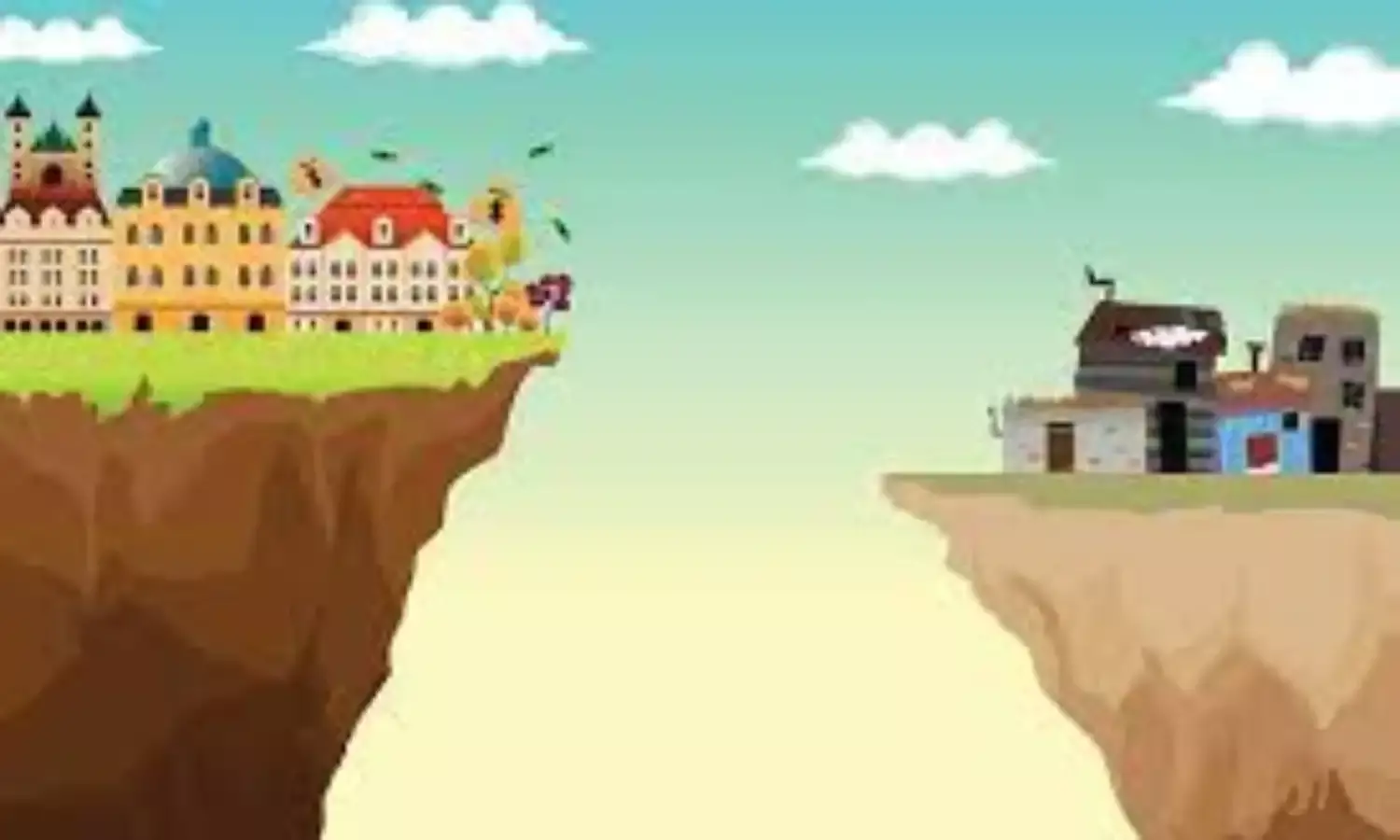Wealth Of The Richest Man In India Increased By 46% In 2022
Oxfam pre-budget report points to reducing inequalities

Oxfam India’s latest report ‘Survival of the Richest: The India Story’ has made a strong case for taxing the richest sections to find the resources for substantially stepping up funds for the social sector, particularly health and education. Released before the Union Budget 2023, this report is expected to pitch the Budget debate strongly in favor of reducing inequalities.
This case is strong because of two obvious and important facts to which this report draws pointed attention. The first is the shocking extent of inequality, particularly wealth inequality.
If you were earlier surprised by the extent of wealth inequality as pointed out in the ‘World Inequality Report’, which stated that the bottom 50% of the population has only 6% of the wealth, the Oxfam report says that the situation is even worse than this with the bottom 50% having only 3% of the wealth.
What is worse, the richest and wealthiest sections have been capturing most of the recent growth. The pandemic and its aftermath may have increased the sufferings of the overwhelming majority of people, but this period also witnessed a big spurt in the number of billionaires as well as a huge increase in their wealth, with the biggest increase recorded by the richest among them.
This report points out that the richest 21 Indian billionaires have more wealth than 700 million Indians. Counting from the appearance of the pandemic up to November 2022, the wealth of billionaires in India increased by 121%, or INR 3,608 Crore per day in real terms (one crore=10 million), or INR 2.5 Crore per minute.
The total number of billionaires in India increased from 102 in 2020 to 166 in 2022. The wealth of the richest man in India increased by 46% in 2022. Just 5% of Indians own more than 60% of wealth. From 2012 to 2021 40% of the wealth created in India has gone to just 1% of the population and only a mere 3% has gone to the bottom 50%.
The second aspect to which this report draws attention is that while the fortunes of the richest have been going up at such a fast pace, India’s tax system has been becoming more regressive. A much greater share of the taxes are being increasingly collected in the form of indirect taxes than direct taxes. In fact, corporate tax was reduced heavily in 2019.
The projected revenue foregone by the Union Government in 2020-21 in the form of incentives and tax exemptions to corporates amounted to INR 1,03,285 crore, equivalent to the allocation for implementation of Mahatma Gandhi Rural Employment Guarantee Act (MG-NREGA) for 1.4 years.
Due to these two trends – huge rise in inequalities and increasingly regressive nature of taxation – the burden is falling more on the poor. This is also in the context of the percentage of income going to pay indirect taxes. While at the same time enough resources are not being raised from the richest who have the most capacity, for important welfare needs of the poor and for overall adequate availability of funds for the social sector. Funding for education and health sectors, for instance, continues to be below even the minimal norms considered desirable internationally.
Keeping this in view, there is a clear need for taxing the richest sections to raise adequate resources for meeting urgent welfare and development needs. The combined wealth of India’s 100 richest is INR 54 lakh Crore ( $660 billion), an amount the Oxfam report says can fund the entire Union Budget (as per existing estimates) for more than 18 months ( one million=10 lakh).
The wealth of the top 10 richest, this report tells us, which equals INR 27 lakh crore or $ 335 billion (a 32% rise from 2021 ), can finance the annual budgets of India’s Ministry of Health and Family Welfare and Ministry of Ayush for more than 30 years. The same amount can instead fund the union education budget for 26 years.
A one-off 20% tax on India’s richest person’s unrealised capital gains from 2017 to 2021 can potentially raise INR 1.8 lakh crore, an amount which can employ more than 5 million primary school teachers for one year.
As Oxfam India CEO Amitabh Behar says, such a situation of extreme inequalities where extreme distress at the bottom co-exists with escalating fortunes at the top should not continue. According to the government’s submission to the Supreme Court, 65% of the deaths among children under the age of 5 are related to hunger/malnutrition to a greater or lesser extent, Behar points out.
A nationwide survey by Fight Inequality Alliance India in 2021 revealed that more than 80% people in India support tax on the rich and corporations who earned record profits during the Covid-19 pandemic.
Oxfam India has made a strong appeal to the Finance Minister to significantly increase direct taxes on the richest sections to raise adequate resources. This report has recommended:
Introduce one-off solidarity wealth taxes and windfall taxes to end crisis profiteering.
Permanently increase taxes on the richest 1%. In particular, raise taxes on capital gains. Implement inheritance, property and land taxes, as well as net wealth taxes.
Enhance the budgetary allocation of the health sector to 2.5% of GDP by 2025.
Enhance the budgetary allocation for education to 6% of GDP.
Strengthen rural and government health infra-structure, reduce education inequalities, ensure scholarships to students from weaker sections, ensure legal and adequate wages to all workers.
Bharat Dogra is Honorary Convener, Campaign to Save Earth now.



